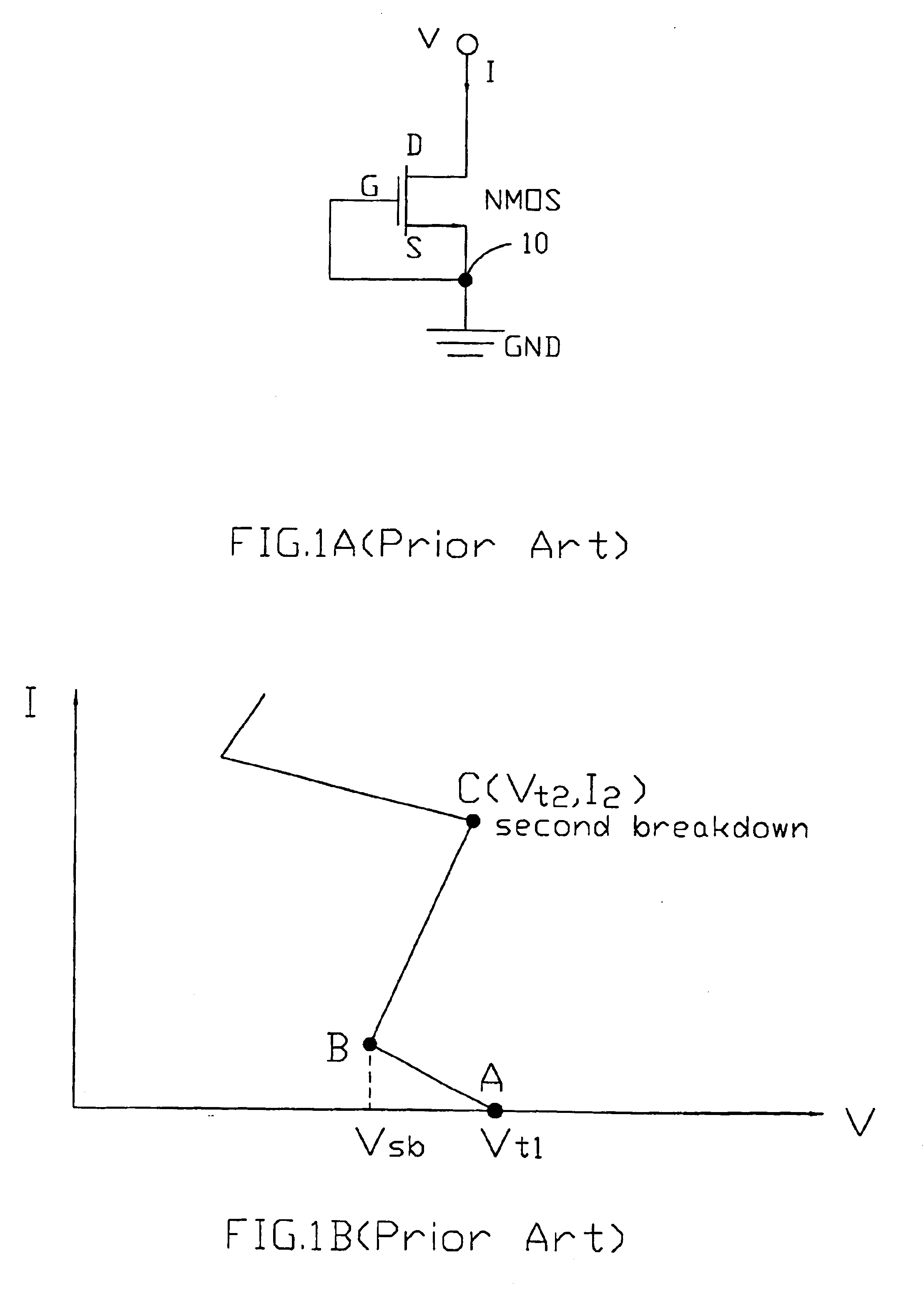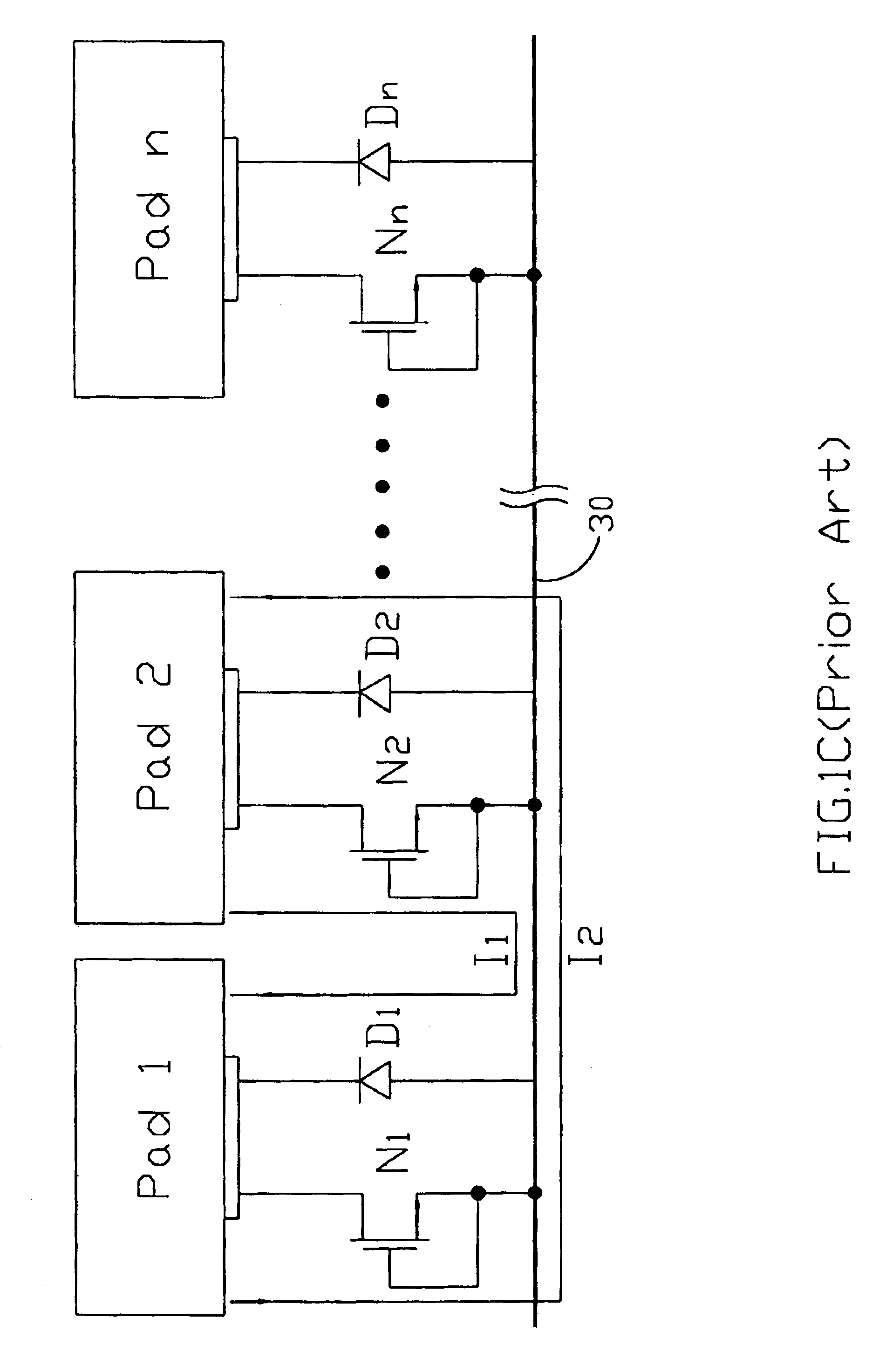Electrostatic discharge protective circuitry equipped with a common discharge line
a protective circuitry and electrostatic discharge technology, applied in the direction of semiconductor devices, diodes, transistors, etc., can solve the problems of affecting the protection performance of the ic device, damage typically occurring during the testing phase of the device fabrication, and affecting the design of the device, so as to improve the protection performance. , the effect of improving the protection performan
- Summary
- Abstract
- Description
- Claims
- Application Information
AI Technical Summary
Benefits of technology
Problems solved by technology
Method used
Image
Examples
Embodiment Construction
Before describing details of the present invention, a low triggering voltage SCR serves as the main component in an ESD protection circuit will be first described with reference to FIG. 2A and FIG. 2B. In both the drawings, the SCR device consists essentially of a PNP bipolar junction transistor T.sub.1 and an NPN bipolar junction transistor T.sub.2. The collector of the PNP transistor T.sub.1 is connected together with the base of the NPN transistor T.sub.2, forming a cathode gate identified by the node 200. The cathode gate 200 is coupled to the emitter of the NPN transistor T.sub.2, via a spreading resistor R.sub.a, constituting a cathode 201, which is connected to a ground terminal GND. The base of the PNP transistor T.sub.1 is connected together with the collector of NPN transistor T.sub.2 to form an anode gate identified by the node 202. The anode gate 202 is coupled to the emitter of the PNP transistor T.sub.1, via a spreading resistor R.sub.b, constituting an anode 203. To a...
PUM
 Login to View More
Login to View More Abstract
Description
Claims
Application Information
 Login to View More
Login to View More - R&D
- Intellectual Property
- Life Sciences
- Materials
- Tech Scout
- Unparalleled Data Quality
- Higher Quality Content
- 60% Fewer Hallucinations
Browse by: Latest US Patents, China's latest patents, Technical Efficacy Thesaurus, Application Domain, Technology Topic, Popular Technical Reports.
© 2025 PatSnap. All rights reserved.Legal|Privacy policy|Modern Slavery Act Transparency Statement|Sitemap|About US| Contact US: help@patsnap.com



